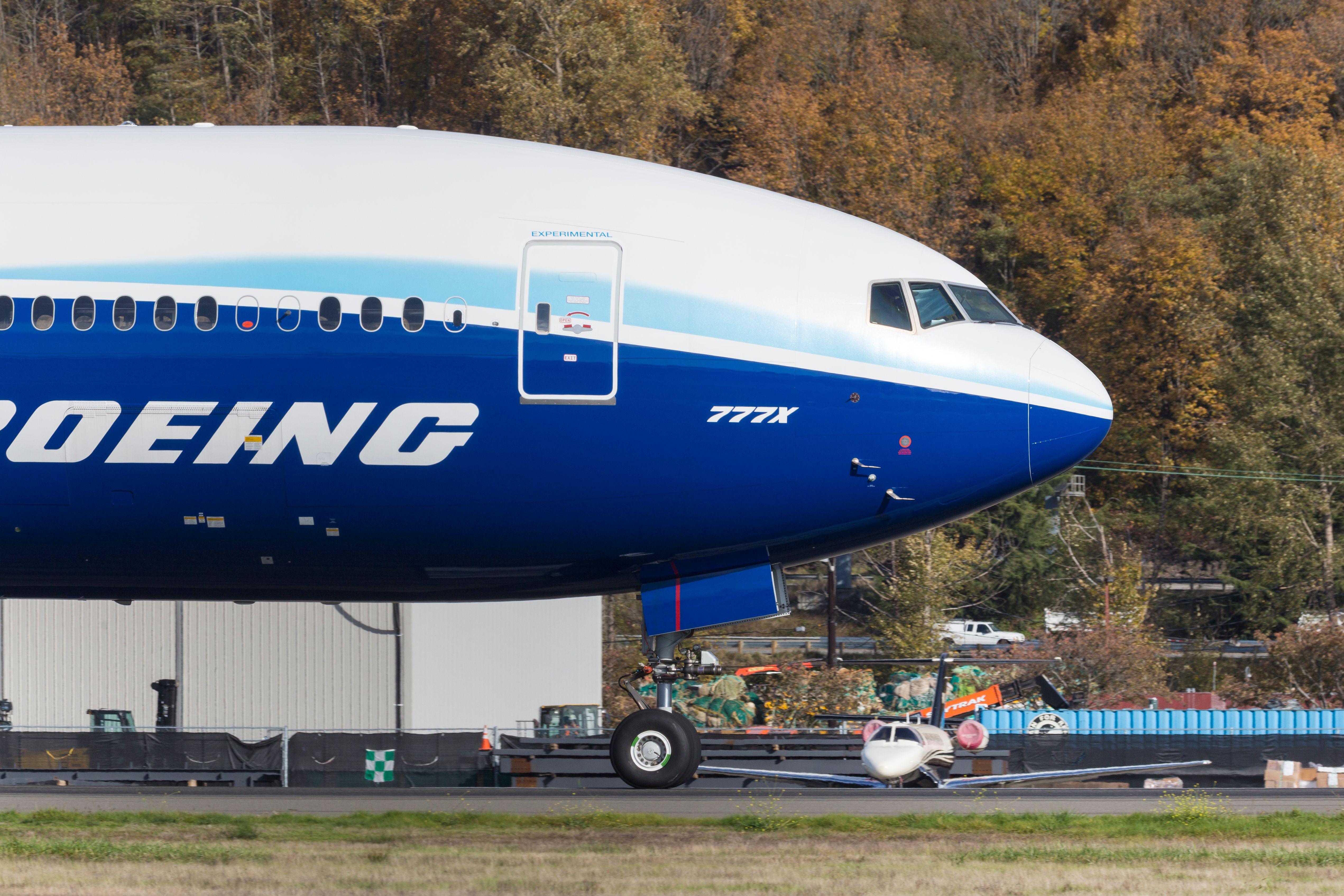Summary Boeing 777X set for early 2025 entry-to-service if program remains on schedule. GE9X engine offers fuel efficiency, quiet operation, and low nitrous oxide emissions. New design includes composite wings with foldable wingtips and improved cabin comforts.
Boeing's 777X program has faced its challenges since launching over a decade ago, but is gradually inching towards its debut in 2025. The program was hit with another setback this week after cracks were found on engine mounts on multiple test aircraft , grounding FAA certification flights for the time being. However, presuming Boeing can remain on schedule, the new widebody has been slated for an early 2025 entry-to-service.

The planemaker has promised some huge improvement on previous generation 777s, even claimimg the 777X can significantly outperform its Airbus counterpart, the A350. Let’s review what new technology the 777X makes it the next best aircraft. The flagship aircraft must provide increased efficiency over existing widebodies and serve as an effective replacement for the Boeing 747.
General Electric GE9X 10% improvement in fuel efficiency 134-inch (3.4 meters) fan diameter Advanced carbon fibre materials High bypass ratio of 10:1 Perhaps the most interesting new feature of Boeing’s next long-range widebody aircraft is its engine - the GE9X, made exclusively for the 777X, is the world's largest commercial turbofan engine, boasting a diameter larger than a Boeing 737 fuselage. Specification Boeing 777-9 Maximum Range 7,285 nautical miles (13,500 km) Engine Thrust 105,000 lbf per engine Maximum Takeoff Weight (MTOW) 775,000 pounds (351,535 kg) Passenger Capacity 426 passengers On a per-pound of thrust basis, it has the lowest nitrous oxide emissions and is the most fuel-efficient and quietest engine produced by General Electric.
Although it’s not the most powerful engine made by GE, the 777X doesn’t need as much thrust thanks to the plane’s aerodynamic efficiency and new wing design. New composite wings with foldable wing tips Carbon fiber-reinforced polymer Folding wingtips reduce wingspan to airport limits Largest commercial twinjet wingspan ever at 235 ft 5 in Compared to the 777-300ER’s 212-foot wingspan, the 777X flaunts a 235-foot wingspan. Wings are also made up of a much higher percentage of carbon fiber composite material than the previous generation, facilitating high aerodynamic lift and lower fuel burn.
This carbon fiber material is also highly durable, providing excellent flex while under the pressures endured by long wings. Get all the latest aviation news right here on Simple Flying. And as many Simple Flying readers know, the upcoming plane will be the first commercial aircraft to feature foldable wing tips.
One key benefit is that when the wing tips fold up, the wingspan decreases to about 212 feet, just within the ICAO aerodrome code E limit like the current 777. Not only does it mean operators can fly at the same airports they do with the 777 classic, but taxi operations will generally be the same. When at full length, the 235 ft wings will deliver improved aerodynamic performance to help the 777X achieve greater efficiency.
According to Boeing, the 777X will be 20% more fuel efficient than its predecessor, the 777-300ER, and 10% better than the A350-1000. Interior design Larger windows than predecessor Lower cabin pressure and better humidity control More overhead storage space Enhanced and customizable mood lighting Of course, we can’t forget to include enhancements to the passenger experience. Thinner walls and improved insulation compared to the 777 classic allow ten extra centimeters of width - while it may not seem like much, it’s enough to allow for 18-inch seats in economy class, even in a 3-4-3 configuration.
For reference, economy seats on an Emirates 777 lineup are 17 inches across in a 3-4-3 format. Higher ceilings also make the cabin feel more spacious, even after accounting for new larger, easy-access overhead storage. Looking at what passengers can expect in the coming years.
Overall comfort is enhanced further with the cabin pressure set to 6,000 feet rather than 8,000 during flight and higher humidity levels maintained. Having a lower cabin pressure helps to reduce the impact of jet lag as the body is more oxygenated. This will be further enhanced by the plane's customizable onboard lighting designed to align with circadian rhythms.
Performance efficiency Lighter airframe lowers operational costs 777-8 will offer longer range Sustainable technology The 777X promises some of the best economics for long-haul operators. The 777-9, which is due to enter service first, will carry more passengers than an A350-1000 but at a reduced max range. However, the 777-8 will exceed the A350-1000s range.
Specification Boeing 777-8 Airbus A350-900 Boeing 777-9 Airbus A350-1000 Typical Capacity 384 passengers 300-350 passengers 426 passengers 350-410 passengers Maximum Range 8,745 NM (16,196 km) 8,100 NM (15,000 km) 7,285 NM (13,500 km) 8,700 NM (16,100 km) The twinjet's efficiencies will also help carriers meet increasingly stringent sustainability requirements. Carbon fibers have reduced the aircraft's overall weight, and the 777X was built to be fully compatible with sustainable aviation fuel (SAF). The new 777 will undoubtedly be an exciting aircraft to fly on, and several major carriers patiently wait for its eventual arrival.
Lufthansa and Emirates were among the first to place orders, although Qatar Airways is also hoping to be the type's launch customer. Despite its latest certification setback, the 777X remains on track for its debut next year..



















